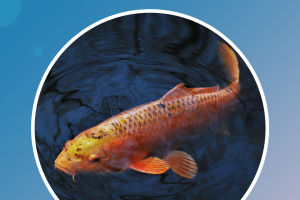In fact, there is an animal that is not inferior to the panda in terms of looks and cuteness but is far less well-known and treated than the panda.
What is the origin of red panda and panda?
Many people mistakenly believe that the red panda is the "baby" of the panda, or that the red panda is a "close relative" of the giant panda, but in fact, the red panda and the giant panda do not belong to the same family.
The team from the Institute of Zoology Academy of Sciences said that during the long evolutionary process, the red panda and the panda were separated as early as 47.5 million years ago.
Therefore, the relationship between red panda and panda may be considered as "distant relatives".
The panda is no longer endangered, but the red panda is really endangered. For various reasons, the number of red pandas has declined sharply in recent decades, and in 2015, the IUCN adjusted the threat level of red pandas from "Vulnerable" to "Endangered.
Beauty at a distance, injury at close range
Once humans are in close contact with a wild animal, it will bring endless potential danger to humans themselves.
Wild animals like red pandas, if they are used to hanging around humans, we see that they are overly familiar with humans and also have the illusion that this is a loved one's animal. With this dangerous thought, people just can't help but get closer.
However, even if it is a pet cat at home, I do not know when it will give me a bite, and more than domestic animals. We are more difficult to grasp the comfortable distance and scale of wild animals, and also more difficult to determine the attack signals they release. Worse, many wild animals before launching an attack, simply will not give you any signal.
Once the distance between wild animals and people is infinitely close, the risk of both parties hurting each other increases infinitely. Believe me, you don't want to be bitten by a red panda that can bite through fresh bamboo shoots.
For the visible risk, we still have hope to escape. But for the invisible danger, we can not really prevent it.
Even though wild animals are cute, they may carry pathogens that can infect humans. Plague, rabies, AIDS, and SARS, the name of these diseases that can stop children from crying at night, are transmitted to the population through wild animals. In turn, pathogens in humans have the potential to bring about the demise of wildlife.
Is it really possible to disinfect and sterilize such places where red pandas are allowed to roam freely in time? The bed where the red panda has rolled around during the day may become a hotbed for humans to sleep with countless unknown bacteria and viruses at night.
Over the years, many scientific and popular science workers have been trying to advocate zoos in a better direction and promote the right concept of ecological civilization. These "forest hotels" "animal parks" and "mini-zoo" once sought after, will cause a huge negative effect.
If you indulge in this false, artificial "paradise", ignore those zoos that really create a comfortable environment for animals, and ignore the real situation of wild animals, then the "harmony between man and nature" will eventually become an empty phrase.
If you like them and protect them, you should stay away from them.


